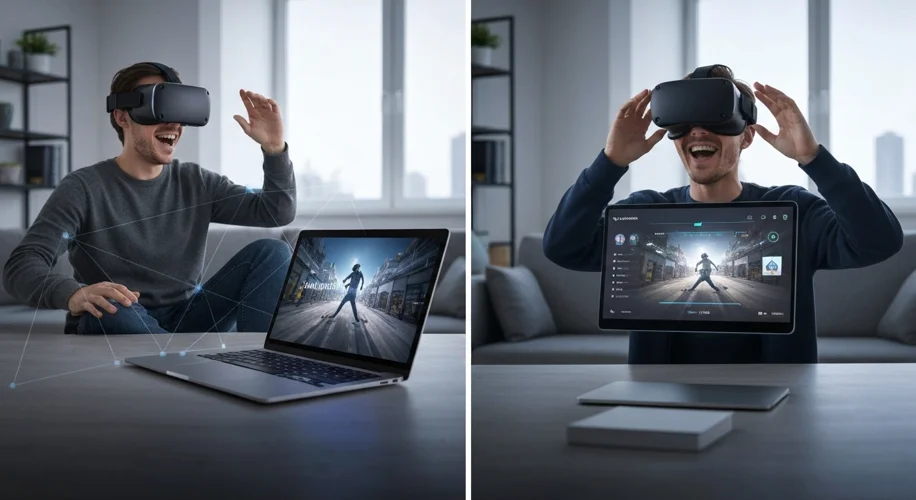Alright, so you’ve got your shiny new VR headset, and you’re ready to dive into the awesome world of PC VR. But that pesky cable? It’s kind of a buzzkill, right? It limits your movement and can sometimes yank you out of the immersion. The good news is, going wireless is totally doable, and two of the biggest players in this space are Steam Link and Virtual Desktop. Let’s break down which one might be best for you.
The Quest for Wireless Freedom
Both Steam Link and Virtual Desktop aim to do one thing: stream your PC VR games wirelessly to your headset. They leverage your home Wi-Fi network to make this happen. Think of it like casting a video to your TV, but way more advanced and, you know, for VR.
Steam Link: The Built-in Option
Steam Link is Valve’s own solution for streaming games. It’s integrated directly into Steam, which is super convenient if you’re already deep into the Steam ecosystem. The biggest win here is that it’s free!
- Pros:
- Free and readily available within Steam.
- Simple setup if you’re already a Steam user.
- Generally good performance for many users.
- Cons:
- Can sometimes be a bit less stable or performant than Virtual Desktop, especially on older hardware or less-than-ideal Wi-Fi setups.
- Fewer customization options compared to Virtual Desktop.
- Primarily designed for SteamVR, though it can work with other PC VR titles.
Virtual Desktop: The Power User’s Choice
Virtual Desktop is a third-party app that’s been around for a while and is widely regarded as the gold standard for wireless PC VR streaming. It’s not free, but many users find the cost well worth the performance and features it offers.
- Pros:
- Generally offers superior performance and lower latency, especially for demanding VR titles.
- Highly customizable settings, allowing you to fine-tune the experience for your specific network and hardware.
- Supports a wider range of VR headsets and platforms beyond just SteamVR.
- Often considered more stable and reliable for consistent wireless play.
- Cons:
- It costs money, which might be a barrier for some.
- The sheer number of options can be a bit overwhelming for beginners.
Which One Should You Use?
This really depends on your setup and what you prioritize.
- If you’re on a budget and primarily use SteamVR: Steam Link is a fantastic starting point. Give it a try first! You might find it works perfectly for your needs.
- If you’re chasing the absolute best performance, lowest latency, and want maximum control over your settings: Virtual Desktop is likely your best bet. It’s the go-to for many serious PC VR enthusiasts for a reason.
- Your Network Matters (A Lot!)
No matter which app you choose, your Wi-Fi network is crucial. For the best experience, you’ll want a strong 5GHz Wi-Fi connection. Ideally, your PC should be connected to your router via an Ethernet cable, and your VR headset should be connecting wirelessly to that same router. Think of it as creating the most direct and stable path for your data.
Ultimately, both Steam Link and Virtual Desktop are awesome tools that let you break free from the VR cable. If you’re looking to elevate your PC VR experience without being tethered, one of these is definitely the way to go.

